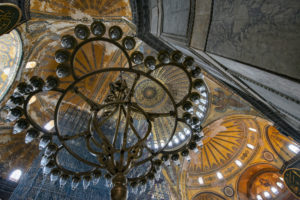I am delighted to announce the publication of Vol. 18 (2020) of The Silk Road. After a trying and often traumatic year that disrupted many of the normal rhythms and cycles of academic life, a return to normalcy is finally on the horizon. It is perhaps fitting then that the latest volume of The Silk Road looks not only back in time, but also to the future. In addition to fascinating articles on the ancient peoples and monuments of the Silk Road—stone-joint metal clamps in China and Korea, medieval Muslim conceptions of “China,” the conservation of a mausoleum in Afghanistan—it also presents insightful work on the modern Silk Roads: the German expeditions to Turfan, urban change in Kashgar, Mongol tourism in China, and Italian ethnographers in Afghanistan. A remembrance of the great Sergei Stepanovich Miniaev reminds us of those we have lost over the past year. Rounding out the volume is our usual collection of book reviews and notices, including an overview of the innovative digital exhibition on the Sogdians hosted by the Freer and Sackler Galleries.
Kashgar: Lost in the Mists of Time—A Photo Essay
Daniel C. Waugh
Conservation of the Mausoleum of Shahzada Abdullah in Kuhandiz, Herat
Jolyon Leslie
The “Turfan Files” in the Museum of Asian Art, Berlin
Caren Dreyer
A Study of Stone-joint Metal Clamps in China and Korea during the 6th-8th Centuries
Hongnam Kim
Appellations of China in Medieval Muslim Literature
Chen Chunxiao
The True Origin of the Mongols?
John Man






 The international scholarly yearbook Quaderni di Studi Indo-Mediterranei (whose editor is the Iranologist Prof. Carlo Saccone at the University of Bologna) devotes each volume to a different theme. Vol. 12 (2019) of QSIM is scheduled to appear in 2020. Its theme is “Sino-Iranica’s Centennial. Between East and West: Exchanges of Material and Ideational Culture. Commemorating the publication, in 1919, of
The international scholarly yearbook Quaderni di Studi Indo-Mediterranei (whose editor is the Iranologist Prof. Carlo Saccone at the University of Bologna) devotes each volume to a different theme. Vol. 12 (2019) of QSIM is scheduled to appear in 2020. Its theme is “Sino-Iranica’s Centennial. Between East and West: Exchanges of Material and Ideational Culture. Commemorating the publication, in 1919, of 


